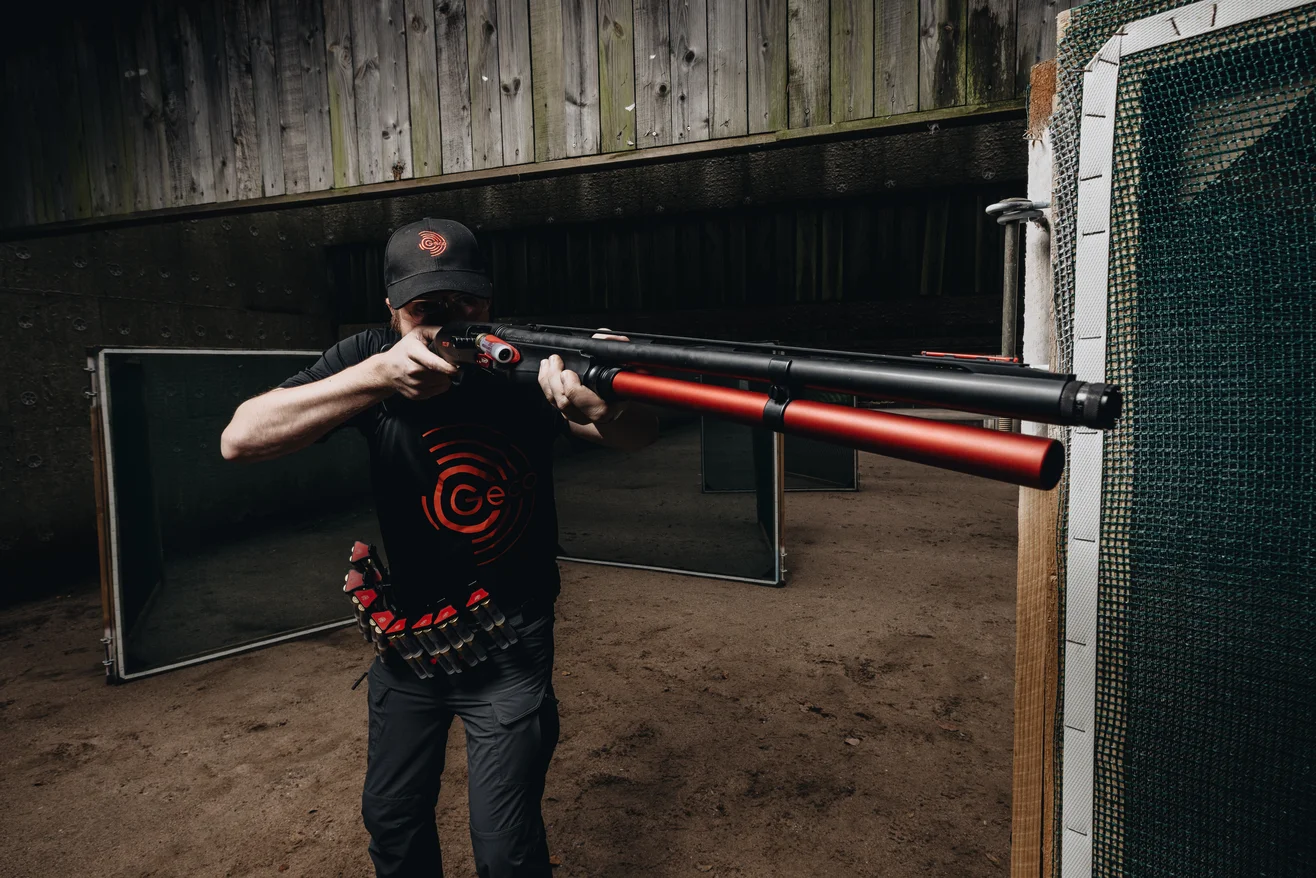Overview of IPSC Shotgun Divisions – Technology, Tactics & Speed in Competitive Shooting

AN OVERVIEW
IPSC SHOTGUN DISCIPLINES
The rulebook of the International Practical Shooting Confederation (IPSC) defines four different divisions for shotgun shooting: Manual, Standard, Modified, and Open. Each division has specific equipment rules and allows varying degrees of technical modifications, making this discipline incredibly diverse and demanding.
Manual Division
The Manual Division uses pump-action shotguns with tubular magazines and open sights. There’s no fixed limit for magazine capacity—it varies depending on national laws. Some shooters use special telescopic magazine tubes, which adjust in length based on the number of loaded shells. This keeps the shotgun compact when fewer rounds are used, while still offering enough capacity when needed. Start load is limited to a maximum of nine rounds. After each shot, the shooter must manually cycle the action.
Standard Division
This division is similar to the Manual Division, but features semi-automatic shotguns with tubular magazines. There’s no need to manually cycle the action, making the shotgun easier to handle and increasing the rate of fire.
Modified Division
Like the Standard Division, the Modified Division allows semi-automatic shotguns, but with more liberal technical enhancements. Shooters may load more rounds, and use red dot sights and muzzle brakes. In all three divisions (Manual, Standard, Modified), shells must be loaded individually by hand. Shooters use specialized shot shell caddies attached to their belt for quick access.
Thanks to modern loading techniques like Double-Load and Quad-Load, experienced shooters can reload four shells in under 1.5 seconds—a huge advantage in competition.
Open Division
This is the most advanced division and allows almost unlimited technical modifications. It is dominated by semi-automatic shotguns with box magazines, red dot optics, and muzzle brakes. Even prototypes and tube-magazine shotguns using speedloaders are permitted. Speedloaders, often spring-loaded, allow multiple shells to be fed into the magazine through the loading port in seconds. Because of these ultra-fast reloads, the Open Division is the fastest and most technologically demanding of all shotgun classes.
Challenges & Appeal of IPSC Shotgun Shooting
Beyond precision and safe gun handling, speed and reloading efficiency play a key role in the first three divisions. Scoring follows the IPSC system using the Hit Factor and Major scoring.
A unique aspect of IPSC shotgun shooting is the diversity of ammunition types used.
All three common types are utilized:
Birdshot: For steel targets and clay pigeons
Buckshot: For steel targets and IPSC paper targets
Slug: For paper targets and occasionally longer-range targets (40m and beyond)
The stage briefing specifies the type of ammo to be used and defines the targets. Each stage demands a combination of skills, to be executed under time pressure with a shot timer. This mix of precision, tactics, and speed makes IPSC shotgun shooting one of the most exciting and multifaceted disciplines in shooting sports.


